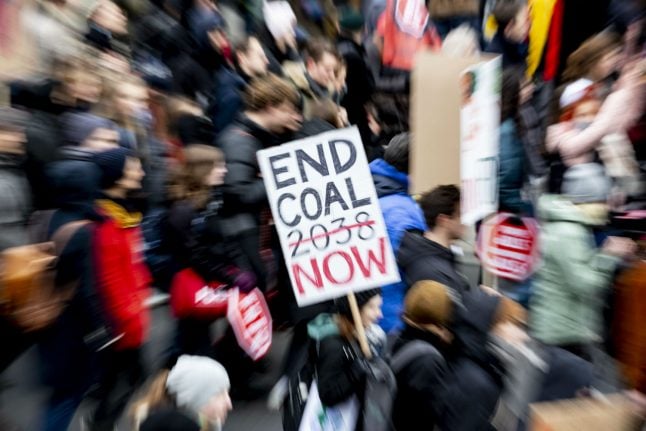Merkel and premiers from Saxony-Anhalt, Saxony, North Rhine-Westphalia and Brandenburg agreed overnight a “shutdown plan” for the country's power plants using the highly polluting fossil fuel, her spokesman Steffen Seibert said in a statement.
Until now, Berlin had named 2038 as the latest possible date to power down the final coal-fired generators.
READ ALSO: Germany should phase out coal mining by 2038: commission
Now, reviews in 2026 and 2029 will examine “whether the moment to shut down the plants can be brought forward by three years,” Seibert said.
“Germany is taking big steps on its way out of the fossil fuel age,” finance minister Olaf Scholz told reporters in Berlin.
For plants set to fall off the grid in the 2020s alone, the government will compensate operators to the tune of €4.35 billion, Scholz said.
The payouts “will be spread out over the 15 years following the shutdown” and represent an “affordable and in my view good result,” Scholz added.
Meanwhile the deal would also spare the Hambach forest, an ancient wood in western Germany threatened by the expansion of a vast open-pit brown coal mine that became the focus of mass protests by environmentalists.
But Thursday's deal did not go far enough for protest group Ende Gelaende, which organized many of the “Hambi stays” demonstrations.
“Exiting coal is not a technical challenge, but a question of political will… 2035 is much too late!” the group tweeted.
Costly exit
Ministers now plan to propose a draft law on the exit from coal “in January” and pass it “in the first half of 2020”.
Germany is under pressure to clarify how it plans to accelerate its “energy transition” away from fossil fuels and towards renewables, with a target to generate 65 percent from carbon-neutral sources by 2030.
Over the same period, Berlin aims to reduce output of greenhouse gases by 55 percent compared with 1990's levels — a goal agreed last year under pressure from demonstrators like the worldwide “Fridays for Future” movement.
But the task has been complicated by Merkel's decision to end nuclear power generation by 2022, leaving coal as the main backstop to renewables during the transition period.
The dirty fuel currently powers around one-third of the country's electricity.
“We are the first country to make a binding decision to quit nuclear and coal,” environment minister Svenja Schulze said Thursday.
“We need a massive build-up of wind and solar energy so that the exit is a real success.”
Social fallout
On top of climate and energy supply challenges, Germany must also wrestle with the social consequences for coal-producing regions of dropping the fuel.
Much brown coal production in particular is concentrated in economically weak regions in the former communist east and in de-industrializing areas of the west.
An “adjustment fund” for workers in black and brown coal plants and brown coal mines is planned to compensate them until 2043, Seibert said.
Meanwhile the federal government will support the four affected states with €40 billion of cash and other aid between now and 2038.
Highlighting projects like a new hospital and a gas power plant in affected east German regions in particular, finance minister Scholz said there are “good prospects for the future”.
READ ALSO: Police clear forest camp for coal excavation



 Please whitelist us to continue reading.
Please whitelist us to continue reading.
Member comments